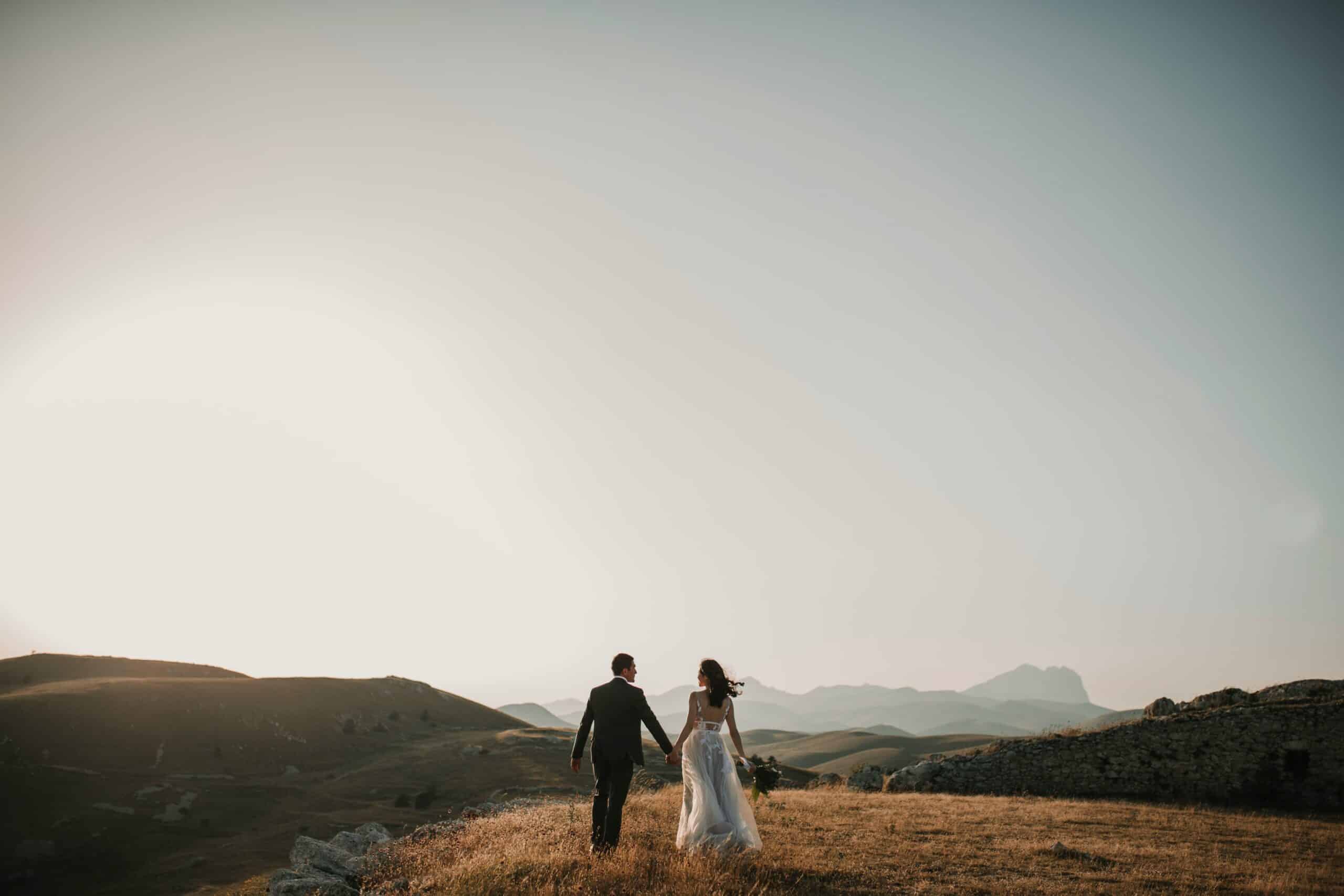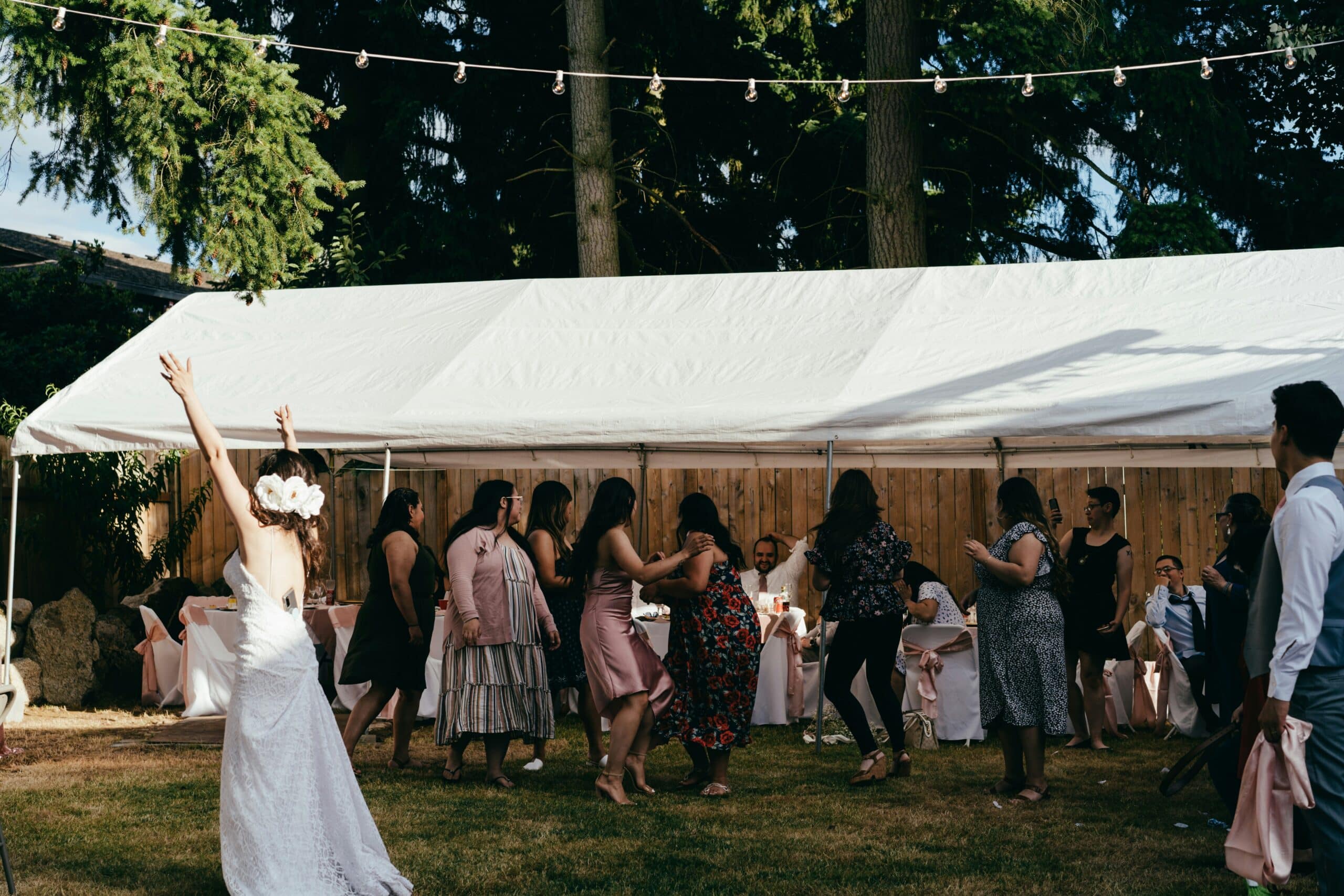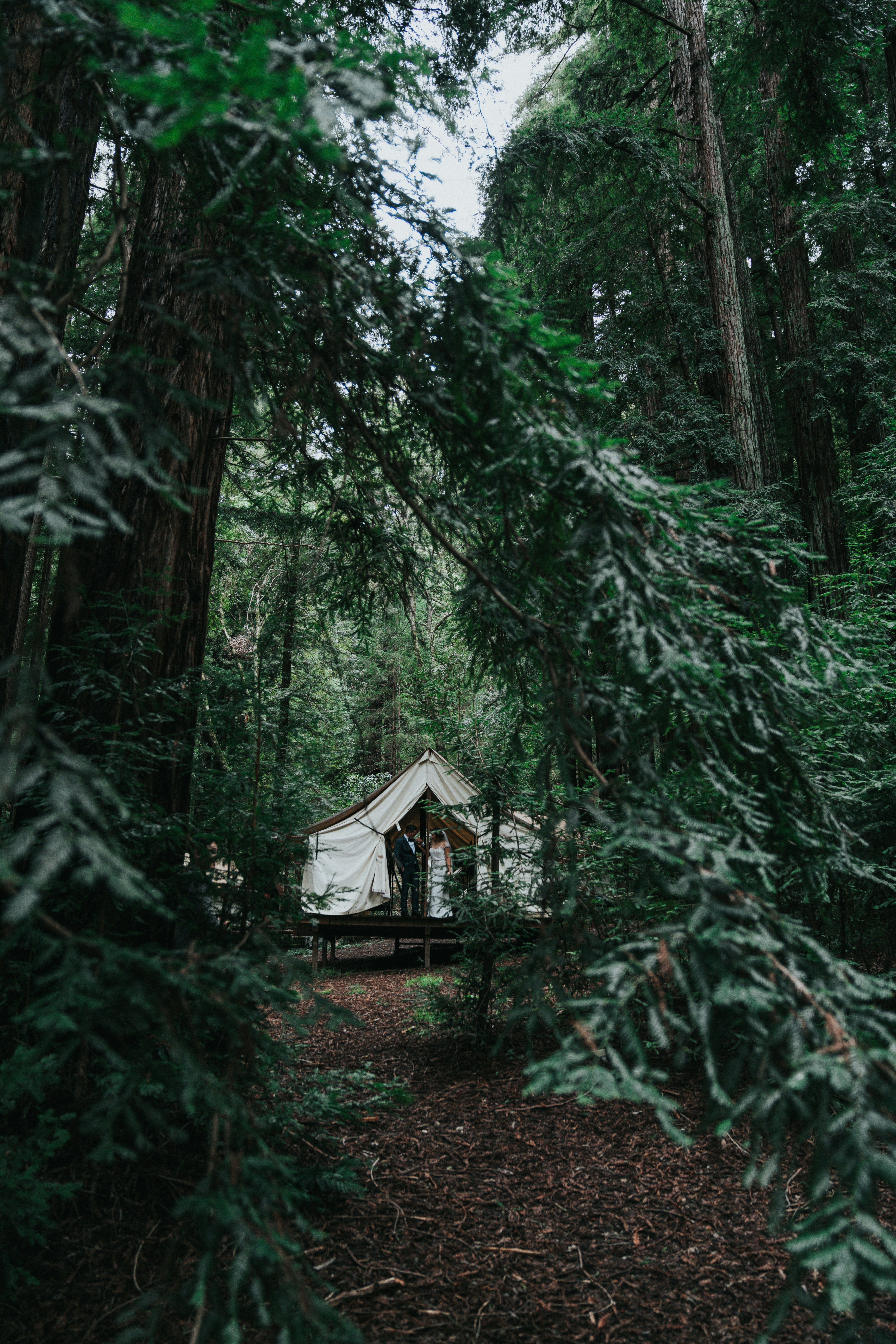Are you planning an outdoor wedding but worried about the elements? Renting the right tent is crucial for a successful event. This guide covers essential tips for choosing the perfect tent type, determining the right size, and planning for weather contingencies. You’ll learn how to enhance your tent with lighting and decor, understand rental costs, and work with reputable companies. From selecting proper flooring like carpet to ensuring adequate heat and space for music and catering, we’ll help you navigate the complexities of tent rentals. By following these tips, you’ll create a comfortable and stylish outdoor wedding space, regardless of the weather.
Key Takeaways
- Choose the right tent style and size based on guest count, venue, and weather conditions
- Consider whether contingencies like sidewalls, heating, cooling, and proper flooring for outdoor weddings
- Enhance the tent with lighting, decor, and florals to create a personalized and memorable atmosphere
- Book tents well in advance and carefully review rental agreements to avoid last-minute issues
- Research and compare tent rental providers, checking references and inquiring about insurance and safety measures
1. Choose the Right Tent Type for Your Outdoor Wedding

Selecting the right tent type is crucial for creating the desired atmosphere at an outdoor wedding. This section explores various tent styles, comparing clear span and pole tents, and highlights weather-resistant features. A wedding planner can assist in choosing a tent that fits the venue’s perimeter, aligns with the floor plan, and stays within budget. Careful consideration of these factors helps minimize expense while maximizing comfort and style.
Consider Your Venue and Landscape
The venue and landscape play a crucial role in selecting the right tent for an outdoor wedding. Couples should consider the terrain, available space, and natural features when choosing between options like sailcloth or traditional tents. Factors such as sunlight exposure, potential weather conditions, and the overall aesthetic of the surroundings will impact the tent selection and placement. Additionally, the chosen tent should complement the venue while accommodating necessary elements like tableware and staying within the allocated budget.
Explore Different Tent Styles
Outdoor wedding tents come in various styles, each offering unique designs to suit different spaces and preferences. From classic pole tents to modern clear-span structures, couples can choose options that complement their wedding attire and adhere to proper etiquette. Sailcloth tents provide an elegant, airy feel, while frame tents offer versatility for uneven terrain. The right tent style enhances the overall beauty of the event while providing necessary shelter:
Benefits of Clear Span vs. Pole Tents
Clear-span tents offer distinct advantages for outdoor weddings compared to pole tents. With no interior poles, clear-span structures provide unobstructed views and flexible floor plans, ideal for a spacious wedding reception and dance area. These tents also offer superior wind resistance and a sturdy roof, ensuring the bride and guests remain comfortable in various weather conditions. Pole tents, while often more affordable, require strategic placement of tables and decor around center poles, which may limit layout options for the ceremony or reception.
Weather-Resistant Features to Look For
When selecting an outdoor wedding tent, couples should prioritize weather-resistant features to ensure a comfortable event regardless of conditions. High-quality tents offer UV-resistant fabric to protect guests from harsh sunlight, while proper ventilation systems maintain airflow and prevent condensation. For unexpected weather changes, event management teams recommend choosing tents with removable sidewalls and a backup light source. Some modern tents even incorporate fashion-forward designs that can withstand light snow, providing versatility for various seasons.
2. Determine the Appropriate Tent Size

Determining the appropriate tent size is crucial for a successful outdoor wedding. Couples must calculate guest count and space needs, considering areas for dining, dancing, and entertainment. Planning should include space for catering and service staff, ensuring ample room for furniture, photography, and essential facilities like kitchen and bathroom areas. The right tent size creates a comfortable floor plan for all wedding activities.
Calculate Guest Count and Space Needs
Calculating guest count and space needs is crucial for determining the appropriate tent size for an outdoor wedding. Couples should consider not only the number of guests but also the space required for various activities, such as dining, dancing, and entertainment. A general rule of thumb is to allocate 10-15 square feet per guest for a seated dinner and additional space for other elements like a dance floor, bar area, and gift table. Couples should also factor in space for decor elements, such as floral arrangements or candle displays, and consider the color scheme when selecting tent materials to create a cohesive atmosphere:
Plan for Dining, Dancing, and Entertainment Areas
When planning an outdoor wedding, couples must allocate space for dining, dancing, and entertainment areas within the tent. The ceremony area requires careful consideration, ensuring proper seating and an aisle for the bridal party. A separate cocktail area can be created for guests to mingle while the newlyweds take photos. The main dining area should accommodate tables, chairs, and linen arrangements while leaving room for a dance floor and entertainment stage. Couples should also consider logistics such as air conditioning units and power sources to ensure comfort throughout the event:
Include Space for Catering and Service Staff
When determining tent size for an outdoor wedding, couples must allocate space for catering and service staff. This area should accommodate food preparation, storage, and serving stations, ensuring smooth operations without interfering with the main event space. The catering area should also allow for easy access to power sources and water supply if needed. Additionally, couples should consider space for floral design preparation, dress storage, and a private area for the wedding party to freshen up. By incorporating these elements into the tent layout, couples can create a seamless flow between the functional and aesthetic aspects of their wedding design.
3. Plan for Weather Contingencies

Weather contingencies are crucial for outdoor weddings. Couples should consider sidewalls for wind and rain protection, ensuring the bridesmaid dresses stay pristine. Heating and cooling solutions maintain guest comfort, while proper flooring options address uneven terrain. These elements, combined with the tent’s ceiling and textile choices, contribute to both functionality and aesthetics, creating a beautiful and practical space regardless of weather conditions.
Sidewalls for Wind and Rain Protection
Sidewalls for outdoor wedding tents provide essential protection against wind and rain, ensuring guests remain comfortable throughout the celebration. These versatile additions can be easily installed or removed based on weather conditions, offering flexibility for the event. High-quality sidewalls not only shield against the elements but also contribute to the overall aesthetic of the tent, with options ranging from clear panels for natural light to elegant fabric walls that enhance the wedding’s ambiance.
Heating and Cooling Solutions
Heating and cooling solutions are essential for maintaining guest comfort in outdoor wedding tents. Portable heaters can warm up chilly evenings, while fans or air conditioning units help cool the space on hot days. Event planners often recommend renting climate control equipment from specialized vendors to ensure proper sizing and efficient operation. These solutions not only keep guests comfortable but also protect delicate elements like floral arrangements and wedding cakes from extreme temperatures.
Flooring Options for Uneven Terrain
Flooring options play a crucial role in creating a stable surface for outdoor weddings on uneven terrain. Portable dance floors, interlocking tiles, or plywood sheets can level the ground beneath the tent, ensuring guests’ safety and comfort. Some rental companies offer specialized flooring systems designed to withstand various weather conditions while providing an elegant look that complements the wedding decor.
4. Enhance Your Tent With Lighting and Decor

Enhancing a wedding tent with lighting and decor transforms the space into a personalized venue. This section explores lighting options to set the mood, decor ideas to personalize the space, and ways to incorporate florals and greenery. These elements work together to create a cohesive and memorable atmosphere for the outdoor wedding celebration.
Lighting Options to Set the Mood
Lighting plays a crucial role in setting the mood for outdoor wedding tents. Couples can choose from various options such as string lights, chandeliers, or lanterns to create a romantic ambiance. Dimmer switches allow for adjustable lighting throughout the event, transitioning from bright ceremony lighting to a softer glow for dinner and dancing. Professional lighting designers can help create custom lighting plans that highlight key areas and complement the overall wedding theme.
Decor Ideas to Personalize Your Space
Personalizing a wedding tent space involves incorporating unique decor elements that reflect the couple’s style and theme. Couples can use custom signage, family photos, or heirloom pieces to add personal touches throughout the tent. Fabric draping along the tent’s ceiling and walls can transform the space, while carefully chosen table linens, centerpieces, and place settings create a cohesive look. These personalized details help create a memorable atmosphere for guests and make the space feel intimate and special.
Incorporate Florals and Greenery
Incorporating florals and greenery enhances the natural beauty of outdoor wedding tents. Couples can use floral arrangements to create stunning centerpieces, hanging installations, or garlands along tent poles. Greenery additions like potted plants or ivy runners soften the tent’s structure and bring a fresh, organic feel to the space. These botanical elements not only add visual interest but also help tie the indoor space to the outdoor surroundings, creating a seamless and elegant atmosphere for the celebration.
5. Understand Rental Logistics and Costs

Understanding rental logistics and costs is crucial for a successful outdoor wedding. Couples should book tents well in advance, coordinate delivery and setup times, and review rental agreements carefully. These steps ensure a smooth process, avoid last-minute issues, and help manage the budget effectively. Proper planning in these areas allows couples to focus on enjoying their special day.
Book Your Tent Well in Advance
Booking a wedding tent well in advance is crucial for securing the desired style and size. Most rental companies recommend reserving tents at least six months before the event, especially during peak wedding season. Early booking allows couples to explore various options, negotiate prices, and ensure availability. It also provides ample time to coordinate with other vendors and plan the tent layout effectively.
Coordinate Delivery and Setup Times
Coordinating delivery and setup times is crucial for a smooth outdoor wedding tent installation. Couples should work closely with their rental company to establish a clear timeline, ensuring the tent is set up well before the event and dismantled after guests have departed. It’s essential to consider factors such as venue access, weather conditions, and the complexity of the tent structure when scheduling setup times. A well-coordinated timeline allows for any necessary adjustments and ensures all other vendors can complete their work efficiently:
Review the Rental Agreement Carefully
Reviewing the rental agreement carefully is essential for couples planning an outdoor wedding with a tent. The agreement should clearly outline all costs, including delivery, setup, and removal fees, as well as any potential additional charges. Couples should pay close attention to the cancellation policy, damage waiver, and weather contingency plans provided by the rental company. Understanding these terms helps avoid unexpected expenses and ensures a smooth rental process for the wedding day.
6. Work With a Reputable Tent Rental Company

Working with a reputable tent rental company is crucial for a successful outdoor wedding. Couples should research and compare providers, check references and reviews, and inquire about insurance and safety measures. These steps help ensure a reliable and professional service, providing peace of mind for the big day.
Research and Compare Providers
Researching and comparing tent rental providers is crucial for couples planning an outdoor wedding. They should gather quotes from multiple companies, examining each provider’s inventory, pricing structure, and additional services offered. Couples can use online directories, wedding planning websites, and local vendor recommendations to create a shortlist of reputable rental companies. By comparing options, couples can find a provider that offers the best value and meets their specific needs for tent style, size, and amenities.
Check References and Reviews
Checking references and reviews is crucial when selecting a tent rental company for an outdoor wedding. Couples should read online reviews on platforms like Yelp or Google, and ask for references from recent clients. They can inquire about the company’s reliability, punctuality, and quality of service. This research helps ensure a positive experience and reduces the risk of issues on the wedding day. Key factors to consider when evaluating references and reviews include:
- Timeliness of delivery and setup
- Quality and condition of rental equipment
- Responsiveness to client needs and concerns
- Professionalism of staff
- Ability to handle unexpected issues
Ask About Insurance and Safety Measures
When selecting a tent rental company for an outdoor wedding, couples should inquire about insurance coverage and safety measures. Reputable companies carry liability insurance to protect against potential accidents or damages during the event. They also implement strict safety protocols for tent installation and maintenance, including proper anchoring techniques and regular equipment inspections. Couples should ask about the company’s emergency procedures and weather contingency plans to ensure a safe and successful outdoor celebration.
Conclusion
Outdoor wedding tent rentals require careful planning and consideration to create a memorable and comfortable celebration. Selecting the right tent type, size, and features ensures protection from weather while enhancing the event’s overall aesthetic. Proper lighting, decor, and logistics management transform the tent into a personalized venue that reflects the couple’s style. By working with reputable rental companies and addressing key aspects such as weather contingencies and guest comfort, couples can create a stunning outdoor wedding experience that will be cherished for years to come.

